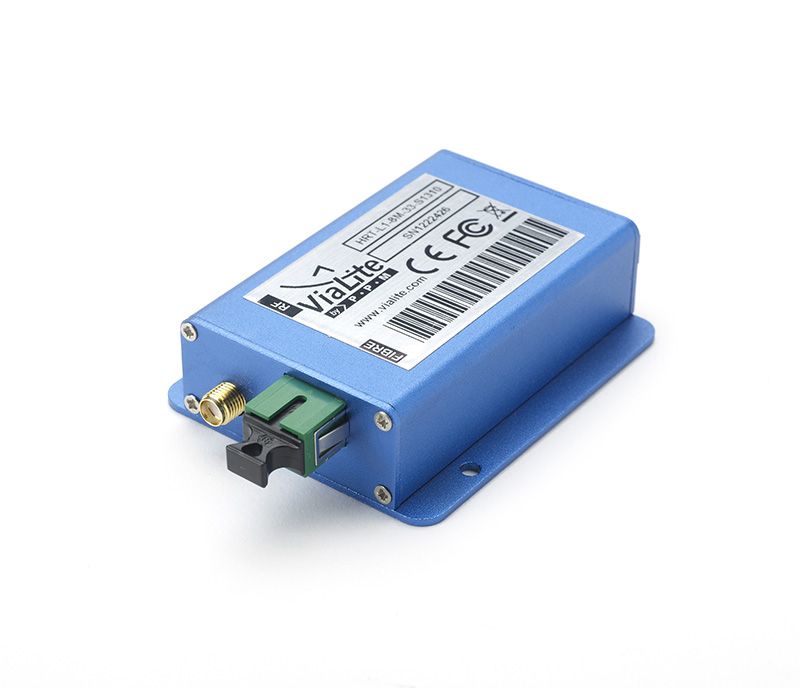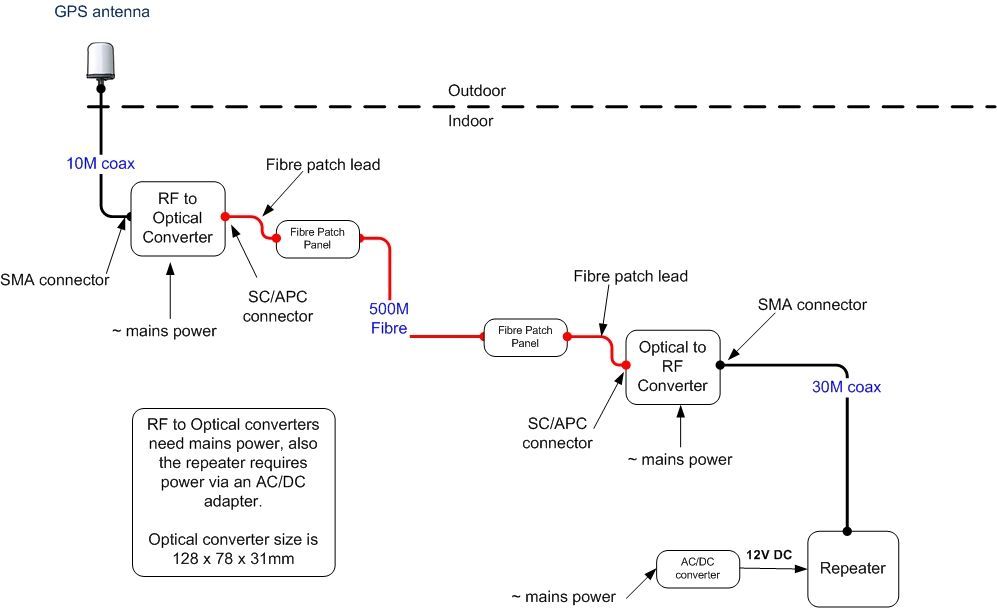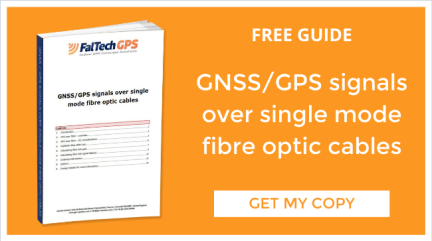GPS over Fibre
GPS over Fibre technology can be used to extend the range of a GPS antenna feeder cable well beyond what is achievable by use of coaxial cables.
Signal losses through attenuation limit the range of a coaxial cable-based system to perhaps a few hundred metres when using low-loss cable and amplifiers, whereas an optical fiber system has a reach of several kilometres by comparison.

- An optical transmit (TX) module
- A length of single-mode optical fiber cable
- An optical receive (RX) module
The transmit module converts RF signals from the outdoor antenna into light pulses and transmits them down the optical fibre link.
The receiver at the far end converts the light pulses back into RF signals and passes them to the GPS equipment (repeater | receiver | timing module).
- The transmit module provides a DC voltage to the low noise amplifier (LNA) in the GPS antenna
- The receive module terminates the DC voltage output from the GPS repeater/receiver and presents an impedance that simulates the presence of a GPS antenna
- Standard optical connector type is SC/APC (FC/APC on request)
- Power for each unit is via the DB9 connector and an external +12V power adapter
- Optional RS232 data modem, alarm and monitoring function also available via the DB9 connector
Example system – designed to provide a timing signal to a GPS-enabled system 200 metres underground.
The alternative would be to use three segments of coaxial cable with two in-line amplifiers.

- Compared to thick, low-loss coaxial cable it is small, lightweight, easier to install and is durable.
- Immune to electromagnetic interference – can be installed near high-voltage cables.
- The cost of 200m single-mode fibre is lower than the equivalent length of coaxial cable and amplifiers.
Need help to decide which system is right for you?
Or call us on

